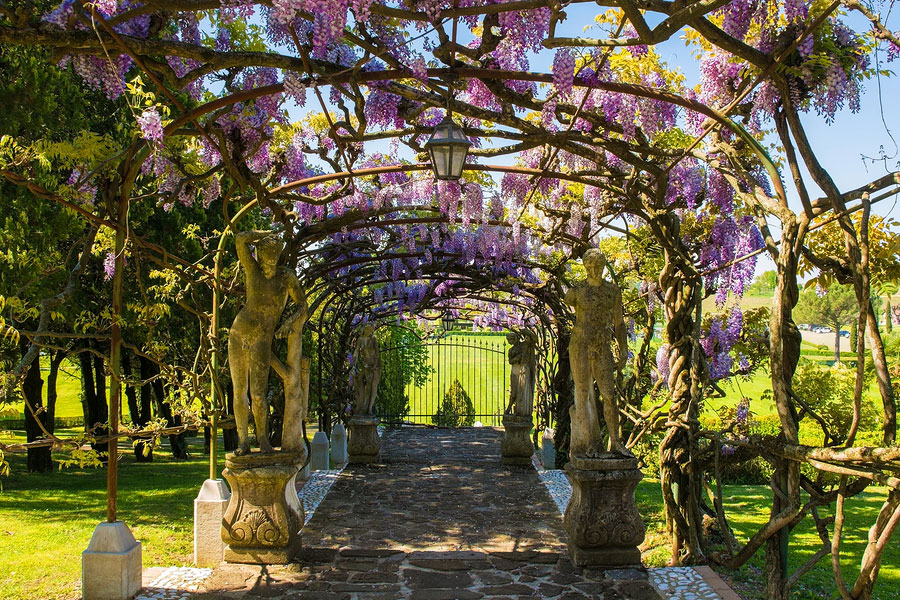Lowcountry landscapes are perfect for climbing vines, a natural feature widely found in the Carolinas. In fact, the South Carolina state flower is the Carolina jessamine, a twining and flowering vine. Talk to your landscape design team to learn more about implementing a Vines Landscape on your property.
Enhance and beautify your landscape with vines in numerous ways:
Camouflage
Want to distract from or camouflage an eyesore? Plant some vines! In fact, for the lowcountry climate, grape vines are a good choice. Grapes will grow in partial shade, but if you want your vines to bear fruit, plant in sunny spots. These also work to camouflage a metal or chain-link fence in a natural and clever way.
Privacy
For a fast growing and hardy privacy wall, plant native vines, like clematis. Clematis is a good option in this region, particularly the Western White. The Western White clematis is a vigorous climber, but with nearly 300 different types of clematis widely available, you should be able to find just what you need.
Illusions
A great reason to use climbing vines in a landscape is to create an illusion. For instance, they fit in small spaces as you can cultivate them vertically. These plants also are ideal for hiding unattractive fixtures or features, providing the illusion of privacy in crowded or occupied premises.
Curb Appeal
For a true southern curb appeal, plant wisteria vines. The fragrance and beautiful hues of native American Wisteria is a great option when you want to enhance your property’s curb appeal. The shades vary from blue to white, and these vines are tolerant of both full-shade and full-sun conditions. Wisteria looks best on a trellis or arch, and it will require something sturdy to support its heft when it is in full-bloom. Watch out for wood surfaces underneath your vine: the moisture from the plant could cause rot and damage.
Support
Vines grow quickly and the weight may be too much for them to sustain without supports. This is also why you should not plant them on weak structures or trees, as vine growth can damage a healthy young tree. Keep your vines trimmed to a pragmatic height and use supports, like trellises and fencing, that can withstand the weight of a hardy vine.
Eco-Friendly
Plant something native to the Carolina landscape, like Hops. Hops do best in full sun and are widely found across the southern United States. Hop vines grow tall and fast, so use supports to protect and preserve your plants. You will see flowers during milder months in the Carolinas, but these will wither at the first frost.
Remember that Vines landscapes are not without maintenance. Some of these fast-growing varieties can become invasive if left untended and unpruned. To prevent them from overrunning other landscape features, prune your vines after they bloom in the springtime.
Want to learn more about implementing vines into your landscaping? Talk to an expert landscape services company in Charleston, at Natural Tendencies Landscape Professionals. They bring years of experience in lowcountry landscaping to the table; let them help you enhance your property today!

